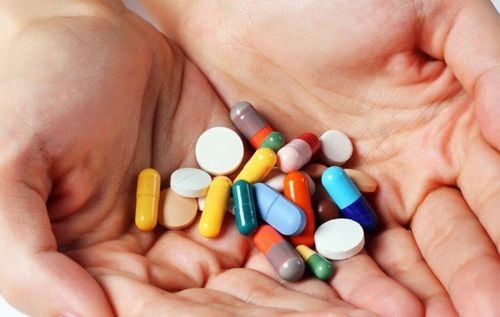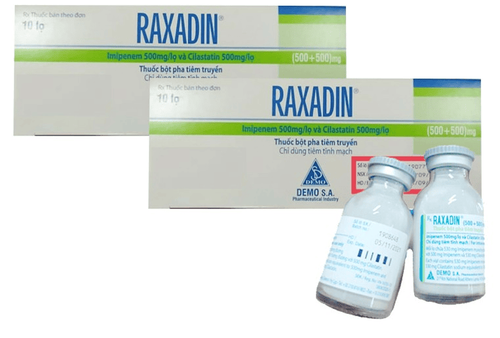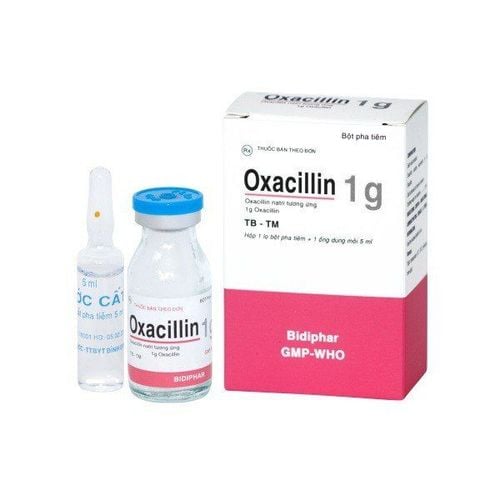This is an automatically translated article.
Itamekacin is an antibiotic used by injection to treat serious infections caused by gram-negative bacteria or in combination with other antibiotics to increase its effectiveness in severe infections. Medicines are used only under the prescription of a doctor and only when the less toxic antibiotics are resistant or allergic.1. What is the effect of Itamekacin?
Itamekacin medicine has the main ingredient Amikacin and excipients just enough. Itamekacin 1000 has the main active ingredient Amikacin with the concentration of 1000mg, which is prepared in the form of a solution for injection of 1000mg / 4mg and Itamekacin has the main active ingredient is Amikacin with the content of 500mg, prepared in the form of a 500mg / 2ml syringe.Amikacin is an antibiotic belonging to the group of semi-synthetic aminoglycoside antibiotics, with bactericidal activity. The mechanism of bactericidal action of Amikacin is to bind to the 30S subunit of the ribosome, thereby preventing bacterial protein synthesis. The drug is active against aerobic Gram-negative bacilli, which are mostly ineffective against Gram-positive bacteria. Therefore, this class of antibiotics is preferred when gram-negative bacteria are suspected. In addition, there is a post-antibiotic property, after falling below the minimum inhibitory concentration of the drug, it still has a bactericidal effect.
2. Indications and contraindications to the drug Itamekacin
2.1. Point
Itamekacin is used for the short-term treatment of serious infections, including the following:Infections of the respiratory tract, central nervous system (including meningitis), bone and joint infections, intra-abdominal infections (including peritonitis), postoperative infections, and burn infections. Severe and recurrent urinary tract infections. This drug should not be used in the early stages when it is discovered and is still sensitive to less toxic antibiotics. Suspected or confirmed staphylococcal infections or infections caused by both Gram-negative bacteria, staphylococci or in people allergic to other antibiotics. Sepsis: Should be combined with penicillin antibiotics effective against gram-positive bacteria for optimal effect. Itamekacin is also effective against Gram-negative bacteria, strains resistant to Tobramycin, Gentamicin. Used on infections caused by bacteria resistant to these drugs.
2.2. Contraindications
Itamekacin should not be used in the following cases:History of allergy to any ingredient in the formula or history of allergy to other aminoglycoside antibiotics. I have a debilitating disease.
3. Usage and dosage of Itamekacin
3.1. Using
The drug is administered by intramuscular or intravenous injection. If necessary, intravenous infusion can be used. The solvent for intravenous infusion is 5% Dextrose solution, Ringer lactate or 0.9% NaCl solution.During use, the patient needs to drink a lot of water to reduce kidney toxicity. Do not arbitrarily adjust the infusion rate during intravenous infusion, use the correct speed adjusted appropriately.
If Amikacin is indicated for concomitant use with other antibiotics, do not mix them with the same syringe or in the same infusion bottle, monitor for allergic reactions, anaphylaxis of the drug during treatment. most often the first dose.
3.2. Dosage
According to the doctor's prescription, you can refer to the dose as follows:Children over 12 years old and adults: Use at a dose of 15mg/kg/day and divided 2-3 times/day, 8-12 apart each time. hours. Children 4 weeks to 12 years of age: The recommended dose for intramuscular or intravenous injection, slow intravenous infusion in children with normal renal function is 15 - 20 mg/kg/day, may be given 15-20 mg/kg, once daily, or a dose of 7.5 mg/kg every 12 hours. In endocarditis and in febrile neutropenic patients, twice daily dosing is recommended. Preterm infants and neonates: May be initiated at 10 mg/kg. Then increase the dose to 15mg/kg/day in 2 divided doses 12 hours apart. In case of severe infection: Can 500mg/time. The maximum dose is 1.5g/day for 10 days. Urinary tract infections not caused by Pseudomonas: Use at a dose of 7.5 mg/kg/day in 2 divided doses 12 hours apart. Duration of treatment: When injected intravenously for 3-7 days, intramuscularly 7-10 days. Less severe infections are effective 24 to 48 hours after injection. If there is no improvement after 4-5 days, the dose or drug should be adjusted accordingly. Renal disease: It is necessary to reduce the dose accordingly and increase the interval between doses appropriately to avoid drug accumulation.
Intravenous infusion: Make sure to use the amount of medicine that can be infused in 30 60 minutes for adults, infusion in 1-2 hours for children.
3.3. Overdose
Overdose may cause symptoms such as muscle paralysis, leading to neuromuscular blockade or may cause respiratory paralysis, especially need to be controlled when used concurrently with the blockade group. neurology or anesthesia. Overdose can be treated with calcium salts.4. Undesirable effects of the drug Itamekacin
Itamekacin can cause unwanted effects, including:Side effects are mainly toxic on cranial nerves VIII and on kidneys such as white blood cells in urine, albuminuria, increased blood urea, red blood cells. and urinary casts, oliguria. Rarely: Causes fever, paresthesia, skin rash, headache, eosinophilia, nausea and vomiting, hypotension, anemia, anaphylaxis may also occur; If you notice any side effects while taking the medicine, notify your doctor or qualified nurse immediately for prompt treatment.
5. Notes when using Itamekacin
Amikacin has the potential to cause nephrotoxicity and ototoxicity, especially in the elderly and young children. Must monitor hearing and kidney function, avoid prolonged use or repeated drug use, do not overdose. To avoid the risk of toxicity to the ears and kidneys.It is necessary to evaluate hearing function before and during use in patients with renal failure requiring treatment for more than 5 days. Discontinue treatment if hearing loss or tinnitus occurs.
Need to monitor kidney function before and during treatment, increase water intake if kidney damage occurs such as casts, urine with white blood cells, red blood cells,...
Stop treatment with Amikacin if decreased urinary excretion, increased blood urea.
When taking this drug, cross-resistance with other aminoglycoside antibiotics may occur. To ensure that the drug is not abused and increases the risk of drug resistance, it is necessary to make an antibiotic chart before treatment, only using it before the results are available if a Gram-negative infection is suspected. Then, based on the results of the antibiogram, disease severity and response, a decision can be made whether to continue or not.
Can cause serious infections due to bacteria resistant to or not sensitive to this antibiotic, in which case an appropriate treatment should be developed.
Pregnant women: Currently, it has not been shown to be safe for use by pregnant or lactating women. However, some antibiotics in the aminoglycoside group have been shown to increase the incidence of malformations in the fetus. Therefore, use only when the infection is life-threatening and the benefit outweighs the risk to the fetus.
Nursing mothers: Because the drug may be excreted in breast milk. Consider stopping breastfeeding or discontinuing medication
Drug interactions: Several interactions have been reported, including
Other drugs that are also nephrotoxic and ototoxic such as the antibiotics Viomycin, Polymyxin B, Gentamicin , Tobramycin, Neomycin, Kanamycin, Streptomycin, Cephaloridine. Increased risk of nephrotoxicity and ototoxicity. Do not use with diuretics such as ethacrynic acid, furosemide, osmotic diuretic Mannitol due to increased risk of ototoxicity, increased toxicity of Aminoglycoside antibiotics. Storage conditions: Temperature below 30 degrees Celsius, protected from light. Keep out of sight and reach of children. Do not use after the expiry date printed on the package.
Itamekacin is an antibiotic that is used under a doctor's prescription. When taking the drug, if you have any unusual symptoms, you should consult your doctor for advice.
Please dial HOTLINE for more information or register for an appointment HERE. Download MyVinmec app to make appointments faster and to manage your bookings easily.













